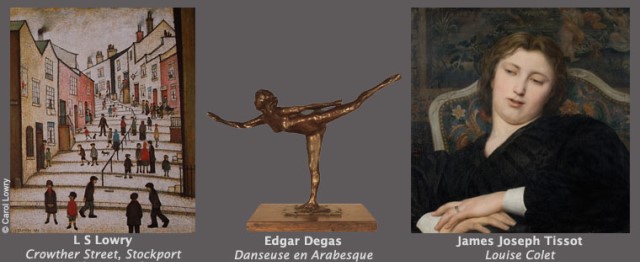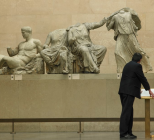There are many reasons why valuing artwork and objects is necessary for museums and heritage attractions and perhaps the most prescient is that in the event of accident, disaster or theft, insurers are more enabled to settle quickly, without argument. The capital value of the collection is also preserved for the tax payer or owner and where an object can be replaced you can do it, or be in a better position to acquire something else for the collection. “In the case of items damaged by fire, water or both knowing the value of an object can mean speedy decisions are made by insurers about conservation, which can be vital,” says director James Glennie.
Valuers such as Art & Antiques Appraisals advise on acquisitions, negotiate private treaty sales, advise on auction consignment and purchases and undertake valuations across a wide range of disciplines for single objects or large collections. The valuation of collections will always involve market values, which are frequently a reflection of the significance of objects in the public’s eye. Glennie says that he has often drawn a curator’s attention to something in a collection by highlighting its value and they have reassessed it and then displayed it and it becomes an object treasured not only because it is fiscally valuable. “Curators knowledge of the value of things in their collection is an essential part of responsible stewardship in today’s world,” says Glennie. “Not doing so leaves curators very exposed – imagine the scenario where the friends of your museum help you buy something, it is subsequently lost or stolen and in the intervening 15 years it has trebled in value and you have not insured for that increased value.”
Therefore it is recommended that regularly updated valuations are made because they reflect the quickly changing market more closely and very often it would be cheaper to update regularly rather than have a massive undertaking every 10 years or so as many valuers offer updating plans spread over a decade or similar period.

Having the relevant supporting documents and information about an object or artwork such as receipts, previous valuations and references can also improve the valuation process. “Supporting documents are very important, not only is provenance an important element of the significance of an item, it is also vital in the assessment of an objects financial value, more so now than ever before. Also if your collection is being valued the more relevant information you can supply the valuer with the quicker he will be and the less it will cost.”
Glennie recommends using a specialist firm familiar with museum practice and valuations as discussions on how the museum can best help the valuer and vice-versa work better. Whether you are having your entire collection valued or a single object the most important thing is understanding the best insurance criteria for the situation. “Most collections have things that are really important to them that in the event of loss they would seek to replace in the best way they can, they have other things that they may choose to replace with something different and other things that they wouldn’t replace at all,” says Glennie. “Reflecting this in how your insure items can save thousands of pounds a year in premiums, even for small to medium size museums and much more for larger institutions.”
Art & Antiques Appraisals’ valuations are widely accepted by grant giving and similar bodies such as the Heritage Lottery Fund, The Art Fund, The V&A Purchase Grant Fund, The Garfield Weston Foundation and the Government Indemnity Scheme. “Most grant bodies ask for more than one opinion, it is important to obtain opinions about values from parties independent from the seller.”
Valuations and insurance are closely linked and Art & Antique Appraisals is widely recommended by the major specialist insurance brokers and underwriters. “The two are closely related, if you are having your whole collection valued for insurance, ask the valuers to individually specify things that are likely to be loaned, then they don’t need to be valued when loaned or can be easily updated individually, sometimes for instance they increase in value because they are boing loaned.”
As the cost of a valuation can vary enormously and the company is a keen supporter of The Museum Valuation Charitable Trust, which offers small grants. “Depending on the requirements of the insurers and the museum, deciding on the best criteria in consultation with your valuers (which with some firms is free), is an important start, this and being prepared for the valuers visit can save a great deal,” says Glennie. “Many entire collection valuations cost in the low thousands and for larger institutions it is obviously more. The Museum Valuation Charitable Trust (MVCT) gives grants of up to £5,000 towards valuation fees, they have just changed their criteria from giving 50 per cent to 100 per cent of the cost of valuations.”
To see the criterior for grants from the Museum Valuation Charitable Trust click here.
Back to topMain Image
Constable’s Salisbury Cathedral from the Meadows (1831) Tate. Used for illustrative purposes only









